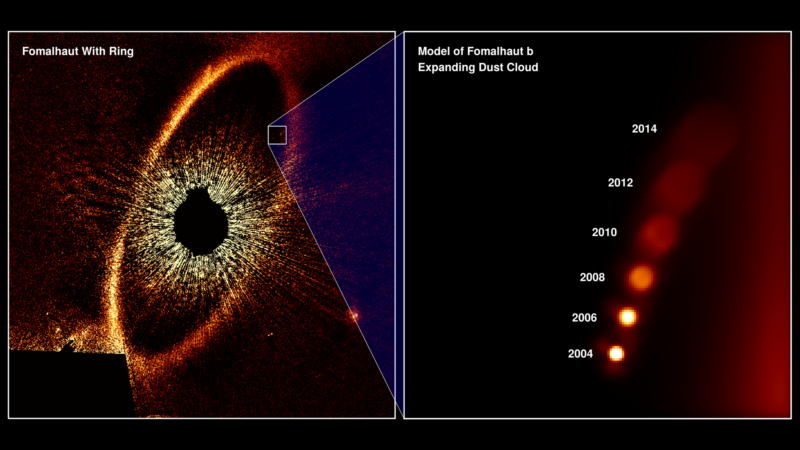We may have seen two asteroids annihilate each other in another solar system

Enlarge / The incredible vanishing exoplanet-what models suggest we'd see as the debris of a collision diffuses away. (credit: NASA, ESA, and A. Gispir and G. Rieke )
We've not actually "seen" the vast majority of exoplanets we've found orbiting distant stars. Instead, their existence has been inferred based on changes in the light of the stars that they orbit. That makes the 20 or so we have imaged directly exceptional. Direct imaging typically requires a very large planet, which means this sample isn't entirely representative, but these planets do provide a unique opportunity for us to observe how bodies interact with each other and their environments in exosolar systems.
But, if two researchers at the University of Arizona are right, we can scratch one of these examples off the list. They say that the supposed planet has vanished in more recent images, which indicates it was never actually there in the first place. Instead, they argue that we've been observing the debris of a smash-up between two very large asteroids.
Well, it looked like a planet...How could astronomers have identified a planet that didn't exist? Well, it really looked like it did. Back in 2008, when scientists first announced its discovery, the planet Fomalhaut b seemed to be very much there. Consecutive images taken a couple of years apart appeared to show it orbiting, and its orbit took it through a disk of dust and frozen material that is exactly where we'd expect planet formation to take place. So, at first glance, everything looks good.
Read 13 remaining paragraphs | Comments